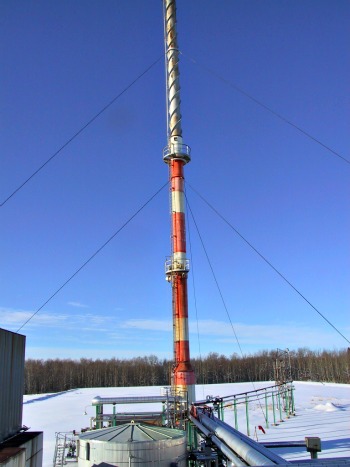- Air Homepage
- Air Quality Testing
- Air Pollution Facts
Air Pollution Facts and Solutions: Breathe Easier
Air pollution facts: I've got them!
Here's the good news and simple solutions for air quality 💨Despite what you hear, did you know we're actually breathing cleaner air now than forty years ago? Learn the surprising facts behind our successes (like nearly eliminating lead from the air and making superclean cars) and how to make simple, powerful choices to keep the air clean.
Find more facts about air pollution.
Why you might love this: Find a wealth of information on air pollution, its history, and the progress made in reducing it. Also, facts and statistics that are not widely known, making it engaging for people interested in environmental issues.
While discussing the challenges of air pollution, we highlight the positive strides made in improving air quality and success stories and the potential for a cleaner future, offering hope and optimism.
Better understand air pollution, which is a pressing global issue, while we raise awareness about air quality and its impact on health and the environment.
Earth science magazines have been cramming air quality issues down our throats for a while. It's for good reason, too. We've actually had some success.
There are more cars on the road than ever, but some air pollution solutions have been implemented.
The Reality of Air Pollution
As a result, we're actually breathing cleaner air now than we were forty years ago. You might be surprised by these air pollution facts. Let's start with the good news about cars.
A new car emits one-twentieth as much pollution as a mid-sized car from the sixties. We got rid of lead from gasoline, so this improvement is possible. Since the 1970s, atmospheric lead content has dropped 96 percent.
It's predicted that the cars of the future will create even less pollution, improving air quality everywhere. Especially with the increasing number of cars on the road, there is a growing concern about the negative impact of vehicles on the environment.
Several car companies are investing heavily in developing and promoting electric and hybrid cars, which produce much less emissions than traditional gasoline or diesel cars. Alternative fuels like hydrogen fuel cells and biofuels are also being explored.
Aside from these developments, there are also efforts to make internal combustion engines more efficient, which can reduce emissions even more. In addition, innovations like self-driving cars could lead to more efficient use of vehicles, reducing the number of cars on the road and reducing pollution.
More Air Pollution Facts.
It's possible to avoid air pollution. Air quality dispersion modelling helps industrial operators figure out how their operations affect the environment. Then they can design cleaner plants using the data. I can carry out the needed air quality modeling for you if you're in this situation.
You can use air quality modeling to figure out how your industry affects your neighbors' air quality and how to improve it. Take a look.
Here's some history: Cities are getting less polluted. I'll give you an example: Mexico City has had some of the most polluted air in the world and recently exceeded U.S. pollution standards on a regular basis. As far back as the 1950s, southern California air was more polluted than Mexico City air at its worst.
Besides Los Angeles, San Diego, and San Francisco, other cities have seen cleaner air in recent decades. There's still a big difference between Canada, the US, and Europe. Air quality in the US has improved significantly in the last few decades thanks to stricter regulations, better technology, and more efforts to reduce pollution.
It's amazing how many North Americans don't even know about the progress made against ground-level air pollution. Almost two thirds of people polled said they thought our air was getting worse.
Ground-level air pollution doesn't include gases like carbon dioxide that have been associated with global warming or ozone depletion caused by chemicals like chlorofluorocarbons that deplete the ozone layer. In spite of that, it still has a huge impact on human health and the environment. Health problems like respiratory illnesses and heart disease can be caused by ground-level air pollution. It can also damage crops, trees, and other plants.
Pollutants released directly into the air from factories, cars, and power plants are called ground-level air pollution. Air pollution at ground level is mostly smog and particulate matter, which are caused by burning fossil fuels like coal and oil. Meanwhile, ground-level air pollution can cause global warming and ozone depletion. That's another reason air quality dispersion modelling is such a valuable tool for informing future decisions.
Even though air pollution has been reduced a lot, we still have a long way to go. Additional facts about reducing our own impact on the environment.
One thing you can do is use your car's air conditioner less. Also, you can reduce the weight in your car so it runs better. Clearly, cars of the future will focus on reducing pollution and improving air quality, and we can expect many exciting innovations in the automotive industry in the coming years. Until then, reducing your driving might help.
Vote with your wallet, and at the polls for more eco-friendly options. Hope you get it.
Go back from Air Pollution Facts to the Air Quality Testers webpage.
Search this site for more information now.
You might see special results at the top of the page, above the word WEB. They're ads, but they might be important to you. Happy searching!
There's some good news about air pollution!
We have been working to solve problems with the quality of the air we breathe.
Here are a few examples of the progress we've made over the decades.
Do you have concerns about air pollution in your area??
Perhaps modelling air pollution will provide the answers to your question.
That is what I do on a full-time basis. Find out if it is necessary for your project.
Have your Say...
on the StuffintheAir facebook page
Other topics listed in these guides:
The Stuff-in-the-Air Site Map
And,
Thank you to my research and writing assistants, ChatGPT and WordTune, as well as Wombo and others for the images.
OpenAI's large-scale language generation model (and others provided by Google and Meta), helped generate this text. As soon as draft language is generated, the author reviews, edits, and revises it to their own liking and is responsible for the content.




New! Comments
Do you like what you see here? Please let us know in the box below.